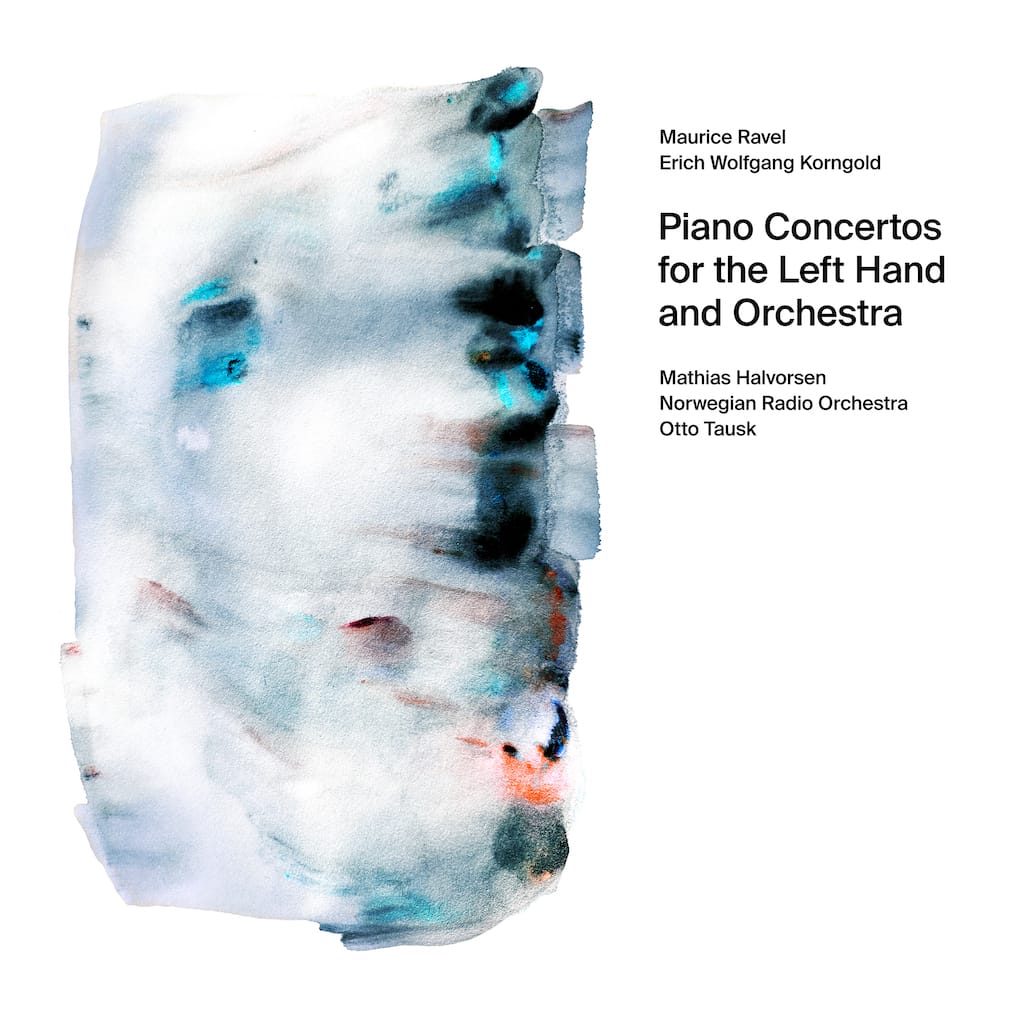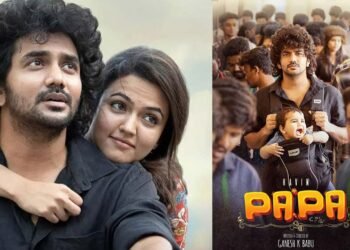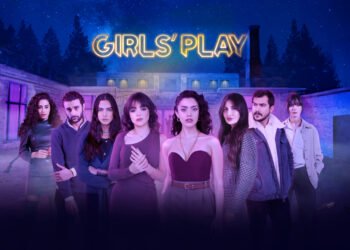Pianist Mathias Halvorsen has lengthy been celebrated for his versatility and modern strategy to classical repertoire. Recognized for his daring initiatives, comparable to performing in full darkness and reimagining operas with violin and piano, Halvorsen consistently pushes the boundaries of custom. On his newest album, he groups up with conductor Otto Tausk and the Norwegian Radio Orchestra to ship gripping interpretations of Maurice Ravel’s and Erich Wolfgang Korngold’s piano concertos for the left hand—two emotionally charged works commissioned by the one-armed pianist Paul Wittgenstein.
These concertos, composed within the aftermath of World Struggle I, transcend their technical limitations to embody themes of resilience, fragility, and heroism. With Halvorsen’s nuanced artistry and the orchestra’s distinctive synergy, the album captures the uncooked pressure and cinematic brilliance of those masterpieces, affirming the enduring relevance of reside efficiency in a digital age.
Within the interview that follows, Mathias Halvorsen delves into the creative and historic significance of those concertos, the challenges of deciphering such emotionally charged works, and his distinctive strategy to mixing custom with innovation.

Serenade Group: What impressed you to concentrate on Ravel and Korngold’s left-hand concertos for this album? How do you strategy balancing their distinct kinds?
Mathias Halvorsen: Each concertos are extraordinary works born out of private and historic turbulence, tied to Paul Wittgenstein’s resilience and the aftermath of the First World Struggle. They stand on the crossroads of tragedy and triumph, fragility and power. Ravel’s concerto is taut and introspective, with moments of just about insufferable magnificence, whereas Korngold’s is expansive and cinematic, crammed with daring gestures and sweeping melodies. Balancing their kinds includes immersing myself of their emotional worlds. With Ravel, it’s about restraint and precision, permitting the stress to simmer simply beneath the floor. Korngold, in contrast, calls for a broader palette, embracing its symphonic scope and narrative depth.
ST: Paul Wittgenstein’s story is deeply tied to those compositions. How did his resilience and narrative affect your interpretation?
MH: Wittgenstein’s story of overcoming the lack of his proper arm to create a profession as a one-handed pianist is profoundly transferring. It’s not nearly technical adaptation however about reworking adversity into artwork. His story inspired me to concentrate on the stress in these items—the battle between limitation and creativity, fragility and energy. I attempt to honor that spirit in my interpretation, embracing the imperfections and human drama which might be integral to those works.
ST: The “one towards many” metaphor is critical in these works. How do you embody this dynamic between the piano and orchestra in your performances?
MH: This dynamic is on the coronary heart of each concertos, and it’s one thing I really feel deeply when performing. The piano typically looks like an underdog, struggling to say its voice towards the orchestra’s weight. However there are additionally moments of unity, the place the piano and orchestra discover frequent floor. My function as a soloist is to embody each battle and backbone—to convey the defiance, resilience, and finally the triumph of the person voice amidst the collective.
ST: Given the athletic dimension of performing one-handed concertos, how did you put together bodily and mentally for such demanding items?
MH: Enjoying one-handed requires not simply power and precision however a wholly totally different sort of coordination. Bodily, I centered on constructing stamina and suppleness in my left hand, growing strategies to make sure readability and steadiness throughout the keyboard. Mentally, I labored to internalize the music as an entire, compensating for the shortage of a second hand by shaping phrases and voicings to create the phantasm of fullness. It’s a problem, nevertheless it’s additionally extremely rewarding—it forces you to rethink the way you strategy the instrument.
ST: Your repertoire typically includes modern initiatives, like performing in darkness with LightsOut or adapting operas for piano and violin. How does this creativity form your interpretations of classical works?
MH: These initiatives problem conventional efficiency conventions and invite me to take a look at classical music from new views. Performing in darkness, for instance, heightens the viewers’s concentrate on sound, encouraging me to contemplate the music’s emotional and spatial qualities. Equally, adapting operas requires distilling the essence of the work inside its limitations. These experiences have taught me to strategy classical repertoire with curiosity and suppleness, all the time trying to find methods to make it really feel quick and related.
ST: In a world more and more centered on digital and mechanical perfection, what function do you imagine reside, imperfect efficiency performs in connecting with audiences?
MH: Stay efficiency is about threat and authenticity. It’s not simply the notes—it’s the human presence, the interplay with the viewers, and the unpredictability of the second. Imperfections remind us that music is a residing, respiratory artwork type, created in actual time. Within the case of those concertos, the very act of performing them one-handed is an acknowledgment of human imperfection, turning limitation into an inventive assertion. That is one thing no recording or digital perfection can replicate.
ST: You’ve labored on various initiatives, from Beethoven sonatas to Bach’s The Nicely-Tempered Clavier on ready pianos. What unites these initiatives beneath your creative imaginative and prescient?
MH: On the core of all my initiatives is a need to discover how classical music connects with modern audiences. Whether or not by experimental strategies, unconventional settings, or daring reinterpretations, I intention to seek out new methods to speak the timeless relevance of this music. Every challenge poses a query: How can we expertise this piece in a manner that feels contemporary, significant, and alive at present?
ST: What message do you hope listeners take away from this album, particularly within the context of the resilience and human imperfection highlighted within the music?
MH: I hope listeners come away with a way of the ability of human resilience—the concept that magnificence can emerge even from adversity. These concertos remind us that limitations should not obstacles however alternatives for creativity and expression. In a world that usually strives for synthetic perfection, these works rejoice the imperfections and struggles that make us human, exhibiting that it’s exactly by our challenges that we will create one thing really profound.
Pianist Mathias Halvorsen has lengthy been celebrated for his versatility and modern strategy to classical repertoire. Recognized for his daring initiatives, comparable to performing in full darkness and reimagining operas with violin and piano, Halvorsen consistently pushes the boundaries of custom. On his newest album, he groups up with conductor Otto Tausk and the Norwegian Radio Orchestra to ship gripping interpretations of Maurice Ravel’s and Erich Wolfgang Korngold’s piano concertos for the left hand—two emotionally charged works commissioned by the one-armed pianist Paul Wittgenstein.
These concertos, composed within the aftermath of World Struggle I, transcend their technical limitations to embody themes of resilience, fragility, and heroism. With Halvorsen’s nuanced artistry and the orchestra’s distinctive synergy, the album captures the uncooked pressure and cinematic brilliance of those masterpieces, affirming the enduring relevance of reside efficiency in a digital age.
Within the interview that follows, Mathias Halvorsen delves into the creative and historic significance of those concertos, the challenges of deciphering such emotionally charged works, and his distinctive strategy to mixing custom with innovation.

Serenade Group: What impressed you to concentrate on Ravel and Korngold’s left-hand concertos for this album? How do you strategy balancing their distinct kinds?
Mathias Halvorsen: Each concertos are extraordinary works born out of private and historic turbulence, tied to Paul Wittgenstein’s resilience and the aftermath of the First World Struggle. They stand on the crossroads of tragedy and triumph, fragility and power. Ravel’s concerto is taut and introspective, with moments of just about insufferable magnificence, whereas Korngold’s is expansive and cinematic, crammed with daring gestures and sweeping melodies. Balancing their kinds includes immersing myself of their emotional worlds. With Ravel, it’s about restraint and precision, permitting the stress to simmer simply beneath the floor. Korngold, in contrast, calls for a broader palette, embracing its symphonic scope and narrative depth.
ST: Paul Wittgenstein’s story is deeply tied to those compositions. How did his resilience and narrative affect your interpretation?
MH: Wittgenstein’s story of overcoming the lack of his proper arm to create a profession as a one-handed pianist is profoundly transferring. It’s not nearly technical adaptation however about reworking adversity into artwork. His story inspired me to concentrate on the stress in these items—the battle between limitation and creativity, fragility and energy. I attempt to honor that spirit in my interpretation, embracing the imperfections and human drama which might be integral to those works.
ST: The “one towards many” metaphor is critical in these works. How do you embody this dynamic between the piano and orchestra in your performances?
MH: This dynamic is on the coronary heart of each concertos, and it’s one thing I really feel deeply when performing. The piano typically looks like an underdog, struggling to say its voice towards the orchestra’s weight. However there are additionally moments of unity, the place the piano and orchestra discover frequent floor. My function as a soloist is to embody each battle and backbone—to convey the defiance, resilience, and finally the triumph of the person voice amidst the collective.
ST: Given the athletic dimension of performing one-handed concertos, how did you put together bodily and mentally for such demanding items?
MH: Enjoying one-handed requires not simply power and precision however a wholly totally different sort of coordination. Bodily, I centered on constructing stamina and suppleness in my left hand, growing strategies to make sure readability and steadiness throughout the keyboard. Mentally, I labored to internalize the music as an entire, compensating for the shortage of a second hand by shaping phrases and voicings to create the phantasm of fullness. It’s a problem, nevertheless it’s additionally extremely rewarding—it forces you to rethink the way you strategy the instrument.
ST: Your repertoire typically includes modern initiatives, like performing in darkness with LightsOut or adapting operas for piano and violin. How does this creativity form your interpretations of classical works?
MH: These initiatives problem conventional efficiency conventions and invite me to take a look at classical music from new views. Performing in darkness, for instance, heightens the viewers’s concentrate on sound, encouraging me to contemplate the music’s emotional and spatial qualities. Equally, adapting operas requires distilling the essence of the work inside its limitations. These experiences have taught me to strategy classical repertoire with curiosity and suppleness, all the time trying to find methods to make it really feel quick and related.
ST: In a world more and more centered on digital and mechanical perfection, what function do you imagine reside, imperfect efficiency performs in connecting with audiences?
MH: Stay efficiency is about threat and authenticity. It’s not simply the notes—it’s the human presence, the interplay with the viewers, and the unpredictability of the second. Imperfections remind us that music is a residing, respiratory artwork type, created in actual time. Within the case of those concertos, the very act of performing them one-handed is an acknowledgment of human imperfection, turning limitation into an inventive assertion. That is one thing no recording or digital perfection can replicate.
ST: You’ve labored on various initiatives, from Beethoven sonatas to Bach’s The Nicely-Tempered Clavier on ready pianos. What unites these initiatives beneath your creative imaginative and prescient?
MH: On the core of all my initiatives is a need to discover how classical music connects with modern audiences. Whether or not by experimental strategies, unconventional settings, or daring reinterpretations, I intention to seek out new methods to speak the timeless relevance of this music. Every challenge poses a query: How can we expertise this piece in a manner that feels contemporary, significant, and alive at present?
ST: What message do you hope listeners take away from this album, particularly within the context of the resilience and human imperfection highlighted within the music?
MH: I hope listeners come away with a way of the ability of human resilience—the concept that magnificence can emerge even from adversity. These concertos remind us that limitations should not obstacles however alternatives for creativity and expression. In a world that usually strives for synthetic perfection, these works rejoice the imperfections and struggles that make us human, exhibiting that it’s exactly by our challenges that we will create one thing really profound.
Pianist Mathias Halvorsen has lengthy been celebrated for his versatility and modern strategy to classical repertoire. Recognized for his daring initiatives, comparable to performing in full darkness and reimagining operas with violin and piano, Halvorsen consistently pushes the boundaries of custom. On his newest album, he groups up with conductor Otto Tausk and the Norwegian Radio Orchestra to ship gripping interpretations of Maurice Ravel’s and Erich Wolfgang Korngold’s piano concertos for the left hand—two emotionally charged works commissioned by the one-armed pianist Paul Wittgenstein.
These concertos, composed within the aftermath of World Struggle I, transcend their technical limitations to embody themes of resilience, fragility, and heroism. With Halvorsen’s nuanced artistry and the orchestra’s distinctive synergy, the album captures the uncooked pressure and cinematic brilliance of those masterpieces, affirming the enduring relevance of reside efficiency in a digital age.
Within the interview that follows, Mathias Halvorsen delves into the creative and historic significance of those concertos, the challenges of deciphering such emotionally charged works, and his distinctive strategy to mixing custom with innovation.

Serenade Group: What impressed you to concentrate on Ravel and Korngold’s left-hand concertos for this album? How do you strategy balancing their distinct kinds?
Mathias Halvorsen: Each concertos are extraordinary works born out of private and historic turbulence, tied to Paul Wittgenstein’s resilience and the aftermath of the First World Struggle. They stand on the crossroads of tragedy and triumph, fragility and power. Ravel’s concerto is taut and introspective, with moments of just about insufferable magnificence, whereas Korngold’s is expansive and cinematic, crammed with daring gestures and sweeping melodies. Balancing their kinds includes immersing myself of their emotional worlds. With Ravel, it’s about restraint and precision, permitting the stress to simmer simply beneath the floor. Korngold, in contrast, calls for a broader palette, embracing its symphonic scope and narrative depth.
ST: Paul Wittgenstein’s story is deeply tied to those compositions. How did his resilience and narrative affect your interpretation?
MH: Wittgenstein’s story of overcoming the lack of his proper arm to create a profession as a one-handed pianist is profoundly transferring. It’s not nearly technical adaptation however about reworking adversity into artwork. His story inspired me to concentrate on the stress in these items—the battle between limitation and creativity, fragility and energy. I attempt to honor that spirit in my interpretation, embracing the imperfections and human drama which might be integral to those works.
ST: The “one towards many” metaphor is critical in these works. How do you embody this dynamic between the piano and orchestra in your performances?
MH: This dynamic is on the coronary heart of each concertos, and it’s one thing I really feel deeply when performing. The piano typically looks like an underdog, struggling to say its voice towards the orchestra’s weight. However there are additionally moments of unity, the place the piano and orchestra discover frequent floor. My function as a soloist is to embody each battle and backbone—to convey the defiance, resilience, and finally the triumph of the person voice amidst the collective.
ST: Given the athletic dimension of performing one-handed concertos, how did you put together bodily and mentally for such demanding items?
MH: Enjoying one-handed requires not simply power and precision however a wholly totally different sort of coordination. Bodily, I centered on constructing stamina and suppleness in my left hand, growing strategies to make sure readability and steadiness throughout the keyboard. Mentally, I labored to internalize the music as an entire, compensating for the shortage of a second hand by shaping phrases and voicings to create the phantasm of fullness. It’s a problem, nevertheless it’s additionally extremely rewarding—it forces you to rethink the way you strategy the instrument.
ST: Your repertoire typically includes modern initiatives, like performing in darkness with LightsOut or adapting operas for piano and violin. How does this creativity form your interpretations of classical works?
MH: These initiatives problem conventional efficiency conventions and invite me to take a look at classical music from new views. Performing in darkness, for instance, heightens the viewers’s concentrate on sound, encouraging me to contemplate the music’s emotional and spatial qualities. Equally, adapting operas requires distilling the essence of the work inside its limitations. These experiences have taught me to strategy classical repertoire with curiosity and suppleness, all the time trying to find methods to make it really feel quick and related.
ST: In a world more and more centered on digital and mechanical perfection, what function do you imagine reside, imperfect efficiency performs in connecting with audiences?
MH: Stay efficiency is about threat and authenticity. It’s not simply the notes—it’s the human presence, the interplay with the viewers, and the unpredictability of the second. Imperfections remind us that music is a residing, respiratory artwork type, created in actual time. Within the case of those concertos, the very act of performing them one-handed is an acknowledgment of human imperfection, turning limitation into an inventive assertion. That is one thing no recording or digital perfection can replicate.
ST: You’ve labored on various initiatives, from Beethoven sonatas to Bach’s The Nicely-Tempered Clavier on ready pianos. What unites these initiatives beneath your creative imaginative and prescient?
MH: On the core of all my initiatives is a need to discover how classical music connects with modern audiences. Whether or not by experimental strategies, unconventional settings, or daring reinterpretations, I intention to seek out new methods to speak the timeless relevance of this music. Every challenge poses a query: How can we expertise this piece in a manner that feels contemporary, significant, and alive at present?
ST: What message do you hope listeners take away from this album, particularly within the context of the resilience and human imperfection highlighted within the music?
MH: I hope listeners come away with a way of the ability of human resilience—the concept that magnificence can emerge even from adversity. These concertos remind us that limitations should not obstacles however alternatives for creativity and expression. In a world that usually strives for synthetic perfection, these works rejoice the imperfections and struggles that make us human, exhibiting that it’s exactly by our challenges that we will create one thing really profound.
Pianist Mathias Halvorsen has lengthy been celebrated for his versatility and modern strategy to classical repertoire. Recognized for his daring initiatives, comparable to performing in full darkness and reimagining operas with violin and piano, Halvorsen consistently pushes the boundaries of custom. On his newest album, he groups up with conductor Otto Tausk and the Norwegian Radio Orchestra to ship gripping interpretations of Maurice Ravel’s and Erich Wolfgang Korngold’s piano concertos for the left hand—two emotionally charged works commissioned by the one-armed pianist Paul Wittgenstein.
These concertos, composed within the aftermath of World Struggle I, transcend their technical limitations to embody themes of resilience, fragility, and heroism. With Halvorsen’s nuanced artistry and the orchestra’s distinctive synergy, the album captures the uncooked pressure and cinematic brilliance of those masterpieces, affirming the enduring relevance of reside efficiency in a digital age.
Within the interview that follows, Mathias Halvorsen delves into the creative and historic significance of those concertos, the challenges of deciphering such emotionally charged works, and his distinctive strategy to mixing custom with innovation.

Serenade Group: What impressed you to concentrate on Ravel and Korngold’s left-hand concertos for this album? How do you strategy balancing their distinct kinds?
Mathias Halvorsen: Each concertos are extraordinary works born out of private and historic turbulence, tied to Paul Wittgenstein’s resilience and the aftermath of the First World Struggle. They stand on the crossroads of tragedy and triumph, fragility and power. Ravel’s concerto is taut and introspective, with moments of just about insufferable magnificence, whereas Korngold’s is expansive and cinematic, crammed with daring gestures and sweeping melodies. Balancing their kinds includes immersing myself of their emotional worlds. With Ravel, it’s about restraint and precision, permitting the stress to simmer simply beneath the floor. Korngold, in contrast, calls for a broader palette, embracing its symphonic scope and narrative depth.
ST: Paul Wittgenstein’s story is deeply tied to those compositions. How did his resilience and narrative affect your interpretation?
MH: Wittgenstein’s story of overcoming the lack of his proper arm to create a profession as a one-handed pianist is profoundly transferring. It’s not nearly technical adaptation however about reworking adversity into artwork. His story inspired me to concentrate on the stress in these items—the battle between limitation and creativity, fragility and energy. I attempt to honor that spirit in my interpretation, embracing the imperfections and human drama which might be integral to those works.
ST: The “one towards many” metaphor is critical in these works. How do you embody this dynamic between the piano and orchestra in your performances?
MH: This dynamic is on the coronary heart of each concertos, and it’s one thing I really feel deeply when performing. The piano typically looks like an underdog, struggling to say its voice towards the orchestra’s weight. However there are additionally moments of unity, the place the piano and orchestra discover frequent floor. My function as a soloist is to embody each battle and backbone—to convey the defiance, resilience, and finally the triumph of the person voice amidst the collective.
ST: Given the athletic dimension of performing one-handed concertos, how did you put together bodily and mentally for such demanding items?
MH: Enjoying one-handed requires not simply power and precision however a wholly totally different sort of coordination. Bodily, I centered on constructing stamina and suppleness in my left hand, growing strategies to make sure readability and steadiness throughout the keyboard. Mentally, I labored to internalize the music as an entire, compensating for the shortage of a second hand by shaping phrases and voicings to create the phantasm of fullness. It’s a problem, nevertheless it’s additionally extremely rewarding—it forces you to rethink the way you strategy the instrument.
ST: Your repertoire typically includes modern initiatives, like performing in darkness with LightsOut or adapting operas for piano and violin. How does this creativity form your interpretations of classical works?
MH: These initiatives problem conventional efficiency conventions and invite me to take a look at classical music from new views. Performing in darkness, for instance, heightens the viewers’s concentrate on sound, encouraging me to contemplate the music’s emotional and spatial qualities. Equally, adapting operas requires distilling the essence of the work inside its limitations. These experiences have taught me to strategy classical repertoire with curiosity and suppleness, all the time trying to find methods to make it really feel quick and related.
ST: In a world more and more centered on digital and mechanical perfection, what function do you imagine reside, imperfect efficiency performs in connecting with audiences?
MH: Stay efficiency is about threat and authenticity. It’s not simply the notes—it’s the human presence, the interplay with the viewers, and the unpredictability of the second. Imperfections remind us that music is a residing, respiratory artwork type, created in actual time. Within the case of those concertos, the very act of performing them one-handed is an acknowledgment of human imperfection, turning limitation into an inventive assertion. That is one thing no recording or digital perfection can replicate.
ST: You’ve labored on various initiatives, from Beethoven sonatas to Bach’s The Nicely-Tempered Clavier on ready pianos. What unites these initiatives beneath your creative imaginative and prescient?
MH: On the core of all my initiatives is a need to discover how classical music connects with modern audiences. Whether or not by experimental strategies, unconventional settings, or daring reinterpretations, I intention to seek out new methods to speak the timeless relevance of this music. Every challenge poses a query: How can we expertise this piece in a manner that feels contemporary, significant, and alive at present?
ST: What message do you hope listeners take away from this album, particularly within the context of the resilience and human imperfection highlighted within the music?
MH: I hope listeners come away with a way of the ability of human resilience—the concept that magnificence can emerge even from adversity. These concertos remind us that limitations should not obstacles however alternatives for creativity and expression. In a world that usually strives for synthetic perfection, these works rejoice the imperfections and struggles that make us human, exhibiting that it’s exactly by our challenges that we will create one thing really profound.




















